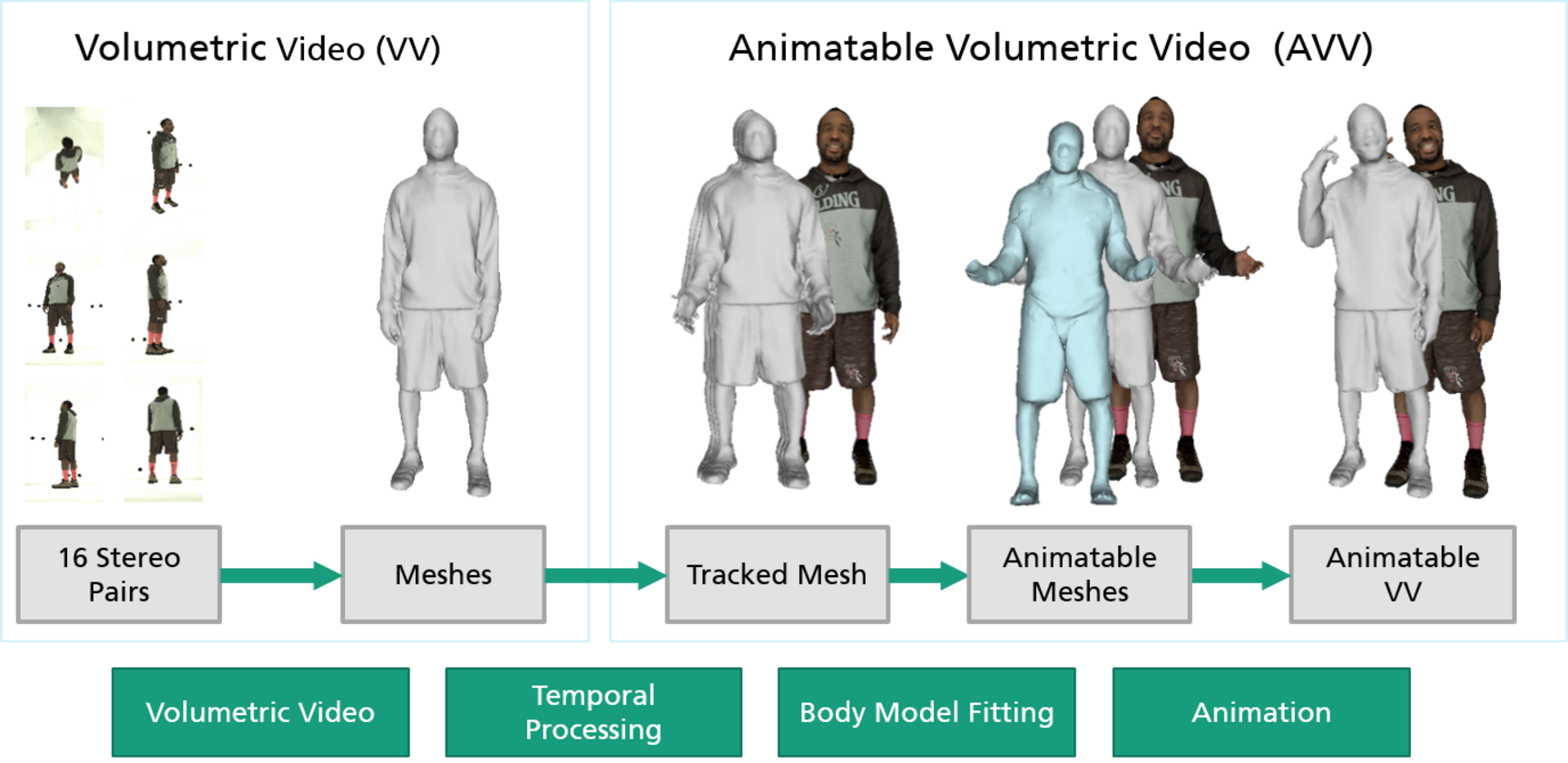The purpose of this project is to investigate and combining volumetric video with more traditional 3D skeletal character animation
Volumetric Video is a 3D Graphics data type typically used to represent data of a dynamic 3D object (e.g., a human) captured from the real world. This data format is relatively new but has many potential applications in Augmented and Virtual Reality, for instance, holograms might be captured as volumetric videos. Each frame of volumetric video is usually captured using some imaging system (e.g. an array of 2D cameras or a single depth camera). Unlike traditional 3D skeletal animation models (such as Motion Capture data), which typically comprise a skeleton ‘skinned’ using a textured mesh that moves with the skeleton when animated, volumetric video comprises a unique geometrical description (or mesh) for each frame along with a unique texture for that frame.
The advantages of volumetric video include the capability to automatically capture personalised, realistic real world subjects, preserving subtle characteristic shape and motion details without need for extensive editing by a 3D animator/artist. The disadvantage is that the data is quite large and computationally expensive to process, and most volumetric is linear i.e., the recorded motion can be played back from start to finish but it is harder to adapt or create novel motion from the recording.
This project seeks to investigate implementing a system to smoothly transition between volumetric video and skeletal animation to create more dynamic animations of subjects that have been captured as volumetric videos.
THIS PROJECT IS SUITABLE FOR: Masters/MSc students. Due to the potentially difficulty level and focus on experimental evaluation, the project is not recommended for 4th year projects, unless the student has extensive previous experience with 3D models and character animation.
PRE-REQUISITES: Computer Graphics, Real-time Animation, awareness of what volumetric video is, understanding of how to do basic skeletal human character animation.

